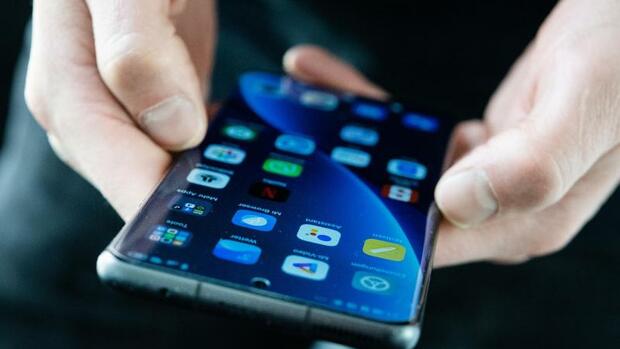It is one of the smartphones equipped with the most powerful mobile processor for Android devices at the moment, Qualcomm’s Snapdragon 8 Gen 1. Xiaomi has placed the high-performance system in a noble case with slightly rounded edges. Everything here feels harmonious. The device fits well in the hand. The velvety back of the case is insensitive to fingerprints.
There are eight or twelve gigabytes (GB) of RAM to choose from, with Xiaomi charging a whopping 100 euros more for the Twelve GB variant. This is much cheaper for other Xiaomi models. In the benchmark test “PCMark”, the Xiaomi 12 Pro scored over 13,000 points and thus ranks at the top of the performance leaderboard.
On the other hand, the results of the “3DMark” test were mixed. Here, almost 78 frames per second were displayed in a single pass, which promises good gaming performance. However, the test was aborted when the “3DMark” was repeated. The Xiaomi 12 Pro was running too hot. Devices of the Android upper class such as the Samsung S22+ have better heat management here.
In terms of battery life, the Xiaomi 12 Pro is in the midfield. In our standard test scenario, the device lasted eight hours and 40 minutes. The best Samsung models come here to just under ten hours. But Xiaomi compensates for this with a sensationally fast charger, which has a whopping 120 watts. This can also be felt in everyday life: the battery charges completely in just 20 minutes.
This is probably not faster with any other smartphone. For this, one also takes into account that the power supply with 220 grams is comparatively heavy. With wireless charging, the charging power is up to 50 watts, which is also sensationally good. Samsung and Apple do not even reach this value with cable.
In the test, I also liked the brilliant 6.73-inch AMOLED display, not only because of the strong color reproduction, but because the screen contents were very easy to recognize even in bright ambient light. Xiaomi uses the best display class (A+) here.
The display has a refresh rate of up to 120 hertz. This means that everything looks very smooth when scrolling or when changing images quickly in the game. The Pro is also able to reduce this frequency to up to 1 Hertz for static content to save power. So Xiaomi plays in the top league with the display. Together with the quadruple speakers from Harman Kardon with support for Dolby Atmos, you also get a mini cinema for your pocket here.
Pleasing photos in the practical test
At first glance, the three cameras installed at the rear are less competitive in the luxury class. In addition to the main camera, there is only a two-fold optical zoom. And the ultra wide angle can not take macro shots. Photo enthusiasts who like to zoom into scenes have to look elsewhere.
In the practical test, however, the photos were liked, also because you can easily blur the image background. When shooting at night, however, the Xiaomi 12 Pro lacked the richness of detail of other Android smartphones such as Pixel 6 Pro from Google or Huawei Mate 40 Pro.
On the credit side there is also an optical image stabilizer, which prevents the photos from shaking. Another positive thing to mention is the camera software, which shrinks the huge data from the three 50-megapixel sensors to a reasonable file size. Four pixels are optimized to one pixel, so that in the end 12.5 megapixels come out as a normal resolution.
The test results with the selfie camera were rather disappointing. We had some difficulties with the sharpness of the front camera, because Xiaomi does not use autofocus here. In addition, the 32-megapixel camera cannot record 4K videos.
The list of restrictions
This brings us to the features that you might actually expect from a smartphone of the upper class, but which the Xiaomi 12 Pro does not offer: you can not activate an e-SIM. There is also no slot for a micro SD memory card. And instead of the current USB interface standard 3.0, the 12 Pro only offers USB 2.0, which, for example, noticeably slows down the transfer of large video files.
It is also curious that Xiaomi does not have an IP protection class for the 12 Pro. But, probably, the manufacturer just wanted to save on the cost of certification, because the SIM card compartment, for example, was provided with a rubber seal that protects against water and dust, as is customary for IP68-certified phones.
Conclusion: For a smartphone that almost reaches the level of Samsung or Apple with a list price of almost 1050 euros, the list of restrictions is then a little too long. However, the market reacted quickly. The Xiaomi 12 Pro is now available at some retailers for less than 900 euros. And that is also a fair price.









